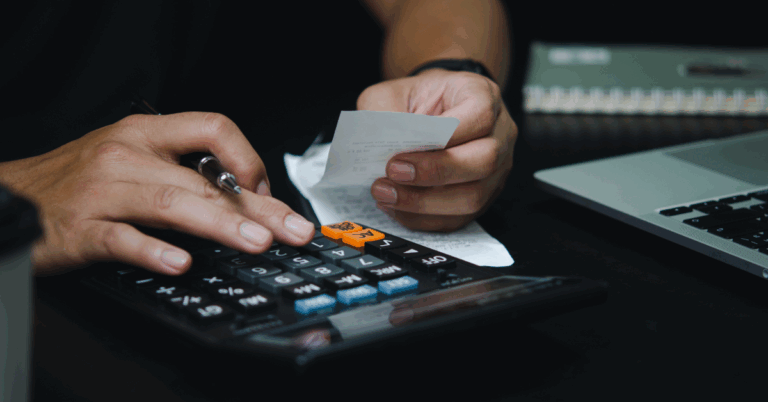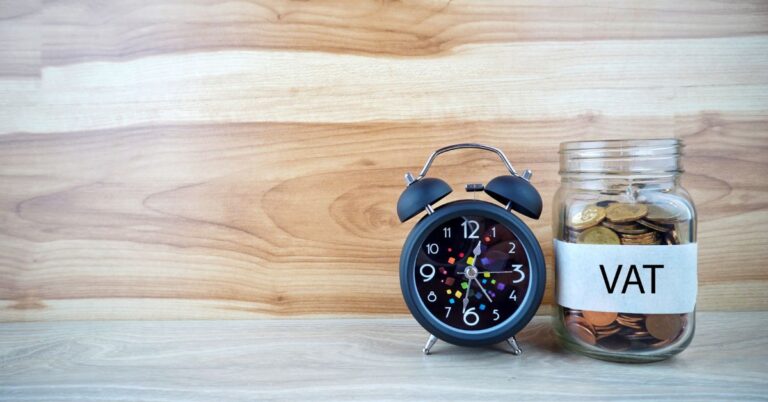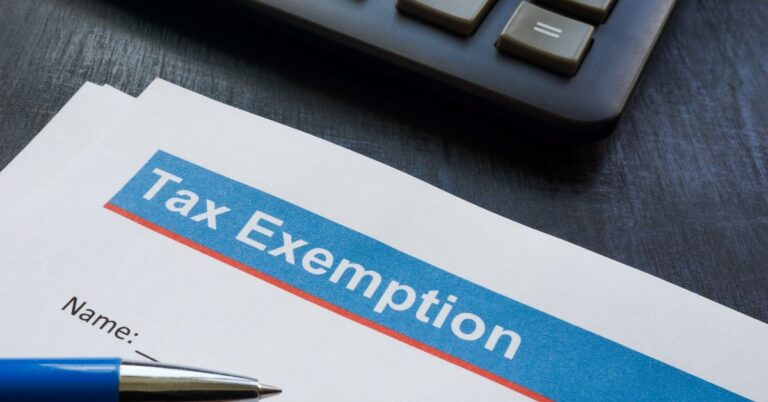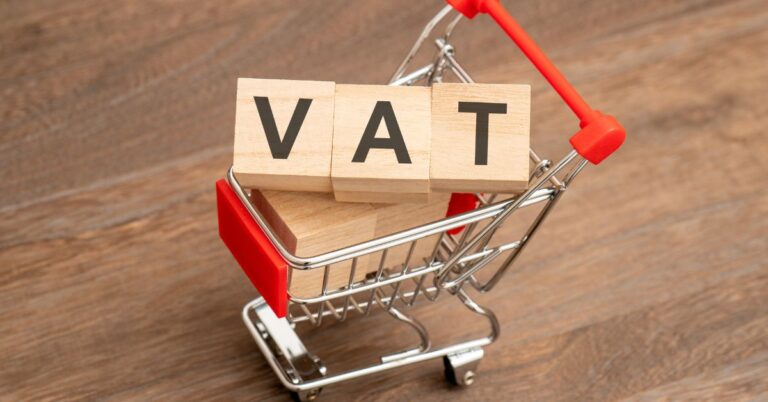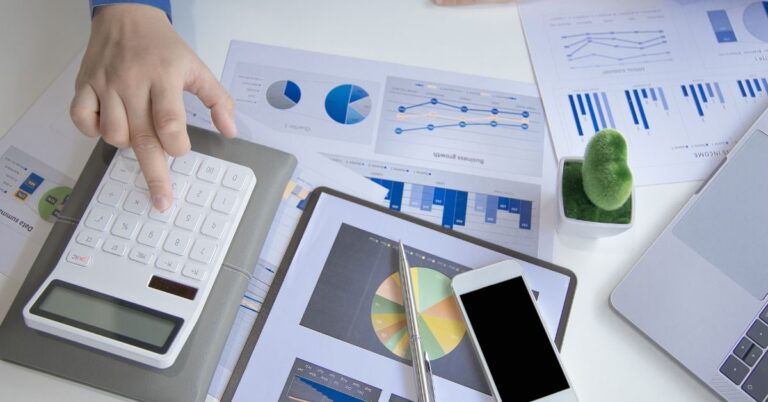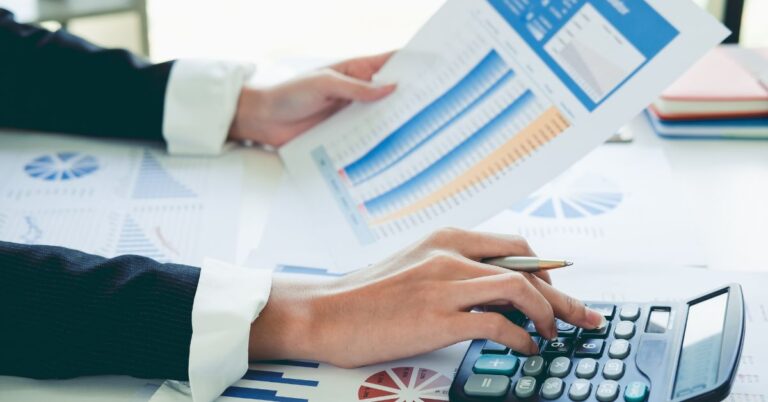How to Claim VAT Refund in UK Business?
You can claim a VAT refund if your input tax (paid on business purchases) is higher than your output tax (charged to customers). Maintain complete records of invoices, include these amounts in Box 4 of your VAT return, and submit online to HMRC. Refunds are paid within 30 days when Box 5 shows a negative balance. Always ensure expenses have a valid business purpose and proper documentation.
This guide covers VAT refund processes for UK registered businesses, sole traders, and foreign companies. You will learn claim procedures, eligible expenses, deadlines, and calculation methods.
What Is A VAT Refund?
A VAT refund occurs when business input tax exceeds output tax collected from sales. Input tax represents VAT paid on business purchases. Output tax represents VAT charged to customers.
Common refund situations include:
- New businesses with high setup costs but low initial sales
- Equipment purchases creating temporary imbalances
VAT refund statistics show businesses in export industries receive regular refunds because zero-rated exports generate little output tax while purchases remain standard-rated.
Who Can Claim VAT Refunds?
UK VAT registered businesses can claim refunds through quarterly returns. Registration becomes mandatory when taxable turnover exceeds £90,000 in any 12-month period since April 2024.
Sole traders can claim VAT back using the same process as limited companies. Mixed-use items require business percentage calculations for accurate claims.
Non-UK businesses can claim UK VAT refunds using Form VAT65A. These businesses must not be UK VAT registered and must incur VAT on genuine business activities.
What Expenses Qualify For VAT Claims?
Business purchases used exclusively for commercial purposes qualify for VAT refunds. HMRC requires clear business purpose documentation for all claimed expenses.
Office and equipment expenses include:
- Computers, software, and office furniture
- Stationery, printing supplies, and communications
Premises costs cover:
- Rent, utilities, and business insurance
- Repairs, maintenance, and security systems
Professional services encompass:
- Legal fees, accounting services, and consultancy
- Marketing, advertising, and staff training
Stock and materials include:
- Raw materials for production and goods for resale
- Packaging materials and storage costs
Mixed-use items require percentage calculations. Home office covering 20% of house space allows 20% utility bill claims. Mobile phones used 60% for business permit 60% VAT recovery.
What Cannot Be Claimed?
Personal expenses and entertainment costs cannot generate VAT refunds. HMRC strictly prohibits claims on non-business activities.
Excluded expenses include:
- Personal meals, clothing, and entertainment
- Client hospitality and most car purchases
Specific restrictions apply to margin scheme goods and personal use items. Documentation must prove exclusive business purpose for successful claims.
How Do You Claim VAT Through Regular Returns?
Complete quarterly VAT returns showing input tax exceeding output tax to receive refunds. Box 5 calculations determine refund amounts when negative.
Step 1: Maintain proper records Keep original VAT receipts, invoices, and bank statements. File documents by date with clear business use notation.
Step 2: Complete VAT return boxes Box 1 shows VAT due on sales. Box 4 shows VAT reclaimed on purchases. Box 5 calculates net position.
Step 3: Submit returns online Use HMRC portal, accounting software, or agent services. Submit within deadline periods to avoid penalties.
Step 4: Receive payment HMRC processes refunds within 30 days via direct bank transfer when Box 5 shows negative amounts.
How Do You Calculate Refund Amounts?
Subtract output tax from input tax to determine refund amounts. Positive results generate HMRC payments to businesses.
Example calculation:
- Input tax (purchases): £2,000
- Output tax (sales): £1,500
- Refund amount: £500
Quarterly monitoring helps predict refund periods. Large equipment purchases often create refund quarters for growing businesses.
Can You Claim VAT Before Registration?
First-time VAT registration allows retrospective claims on previous business purchases. This one-time opportunity covers specific timeframes before registration dates.
Capital goods qualify for 4-year retrospective claims. Equipment, machinery, and fixtures bought within 4 years before registration remain claimable if still owned.
Services qualify for 6-month retrospective claims. Legal fees, accounting services, and consultancy work received within 6 months before registration can be recovered.
Include retrospective amounts in Box 4 of first VAT return. Original invoices must show VAT amounts and business purposes clearly.
How Do Foreign Businesses Claim UK VAT?
Non-UK businesses use Form VAT65A to claim UK VAT refunds. Applications require certificates of status from home country tax authorities.
Eligible foreign business expenses include:
- UK business travel, accommodation, and exhibition costs
- Professional services and equipment purchases for UK activities
Application deadlines run from 1 July to 30 June prescribed years. Claims must be submitted by 31 December following the relevant prescribed year.
Minimum claim amounts apply: £16 for full calendar years or remainder periods under 3 months.
HMRC processes foreign claims within 6 months. Electronic submission through Secure Data Exchange Service (SDES) provides faster processing than postal applications.
What Are The Key Deadlines?
VAT returns must be submitted 1 month and 7 days after period end for online submissions. Paper returns require submission 1 month after period end.
Late submission penalties apply:
- £200 for returns up to 1 month late
- £400 for returns up to 2 months late
Refund processing times vary by claim type. Standard UK business refunds process within 30 days. First-time claims may require additional verification time.
How Do You Avoid Common Mistakes?
Keep complete documentation for all claimed expenses. Missing receipts prevent successful VAT recovery and may trigger HMRC investigations.
Separate business and personal expenses clearly. Mixed claims require detailed percentage calculations with supporting evidence.
Submit returns within deadlines to avoid penalties. Late submissions generate automatic penalty charges regardless of refund positions.
Use digital tools for accuracy. Accounting software reduces calculation errors and maintains systematic records.
How Do You Maximize Refund Benefits?
Time large purchases strategically to optimize cash flow. Equipment purchases during low-sales periods can create beneficial refund timing.
Monitor VAT positions monthly to predict refund quarters. Regular tracking allows better business planning and cash flow management.
Consider professional assistance for complex situations. Accountants help optimize VAT positions and minimize compliance risks.
Use our VAT calculator for accurate calculations. Digital tools help plan purchases and predict refund amounts effectively.
What About Special Situations?
Bad debt relief allows VAT recovery on unpaid customer invoices. Debts over 6 months old and written off in accounts qualify for relief claims.
Vehicle and fuel claims follow specific rules. Business-only vehicles allow full VAT recovery. Mixed-use vehicles require fuel scale charges or detailed mileage records.
VAT registration creates ongoing refund opportunities. Registered businesses can claim input tax against future output tax liabilities.
Final Thoughts
VAT refunds provide significant cash flow benefits for eligible UK businesses. Proper record-keeping, timely submissions, and accurate calculations maximize refund opportunities.
Key success factors include:
- Maintaining complete business expense documentation
- Understanding eligible and excluded expense categories
Start tracking your VAT position today using our VAT rate calculator to identify refund opportunities. Professional guidance helps complex businesses optimize their VAT positions while maintaining compliance.For additional support with paying your VAT bill or understanding specific requirements, our comprehensive guides provide practical solutions for UK business VAT management.
